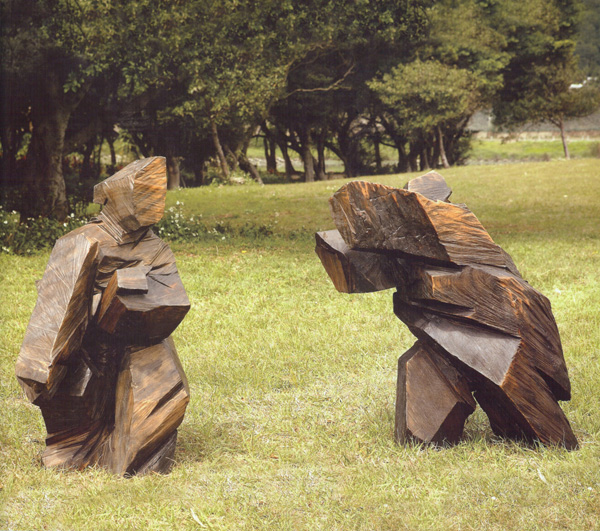|
Taichi Shadow Boxing (Pair)
|
|
1985 Camphor wood 50(L) x 54(W) x 83(H) cm (Left) Signed Ju Ming in Chinese and dated 86(L) |
|
Estimate
6,000,000 - 8,000,000 181,800 - 242,400
|
|
Sold Price
8,946,000 271,091
|
|
|
Performed with knife and ax chopping and chiseling giant pieces of wood, making Taichi visualized and artistic, and perfectly presenting Chinese philosophers' outlook on nature, Ju Ming's famous sculptures, "Taichi Series", has made him an esteemed carving master worldwide. Belonging to the latter of Ju Ming's "Taichi Series" of single and double figures, "Taichi Shadow Boxing" expresses the corresponding relation between the two boxers. The scholar of art history in Oxford University, Michael Sullivan, said: "Taichi is also a form of ritual combat in which two figures actively oppose each other. In Taichi boxing, the participant moves so that he (more rarely she) extends beyond himself. Know your enemy as well as yourself, wrote the ancient military strategist Sun Zi, and you will be invincible1"
The French art critic, Jean-Luc Chalumeau, ever praised Ju Ming's art: "However, that was referring to lines, or forms worked upon in the third dimension, whereas Ju Ming has to solve the constant problem of extricating, from the massiveness of a block of bronze, the sensation of a Taichi Art in which balance must be kept in the midst of disequilibrium. "Taichi Spin Kick'and "Taichi Shadow Boxing'seem to revive the miraculous discoveries of Greek statuary, hidden in the mass of these strangely agile forms2"
Originating from a woodcarving work named "Kungfu" in 1976, Ju Ming's "Taichi Series" are particular about the natural esthetics expressing the union of the universe and human beings. By a conception of original material from camphor wood, various postures have been gradually developed in Ju Ming's "Taichi Series". With a chisel held in his left hand and an axe or saw in the right waving up and down, Ju Ming depicted his own remarkable style. Double-figured works of "Taichi Shadow Boxing", representing Ju Ming's concept toward esthetics by its simplicity and harmonization, rare and commendable among Ju Ming's scarce and large woodcarving works, is frequently inquired about by collectors all the time. "... Some experts claim, indeed, that he is the best wood artist since the end of the Mongol Yuan dynasty in the 14th century3" , wrote Earl Wieman in magazine, "Orientations", in January 1977.
1 Michael Sullivan, The Art of Ju Ming, Ju Ming Taichi Sculptures, (an exhibition catalogue for Ju Ming at South Bank Centre, London, Aug. 13 to Sept. 13, 1991), Hanart T Z Gallery, Hong Kong, 1993
2 Jean-Luc Chalumeau, Ju Ming, Editions Cercle d'Art, 2002, p. 79
3 Liu Chang-chih, This incision!, Ju Ming's Woodcarving Sculpture1, Te Hung Publishing House, Kaohsiung, 1977, p. 3
